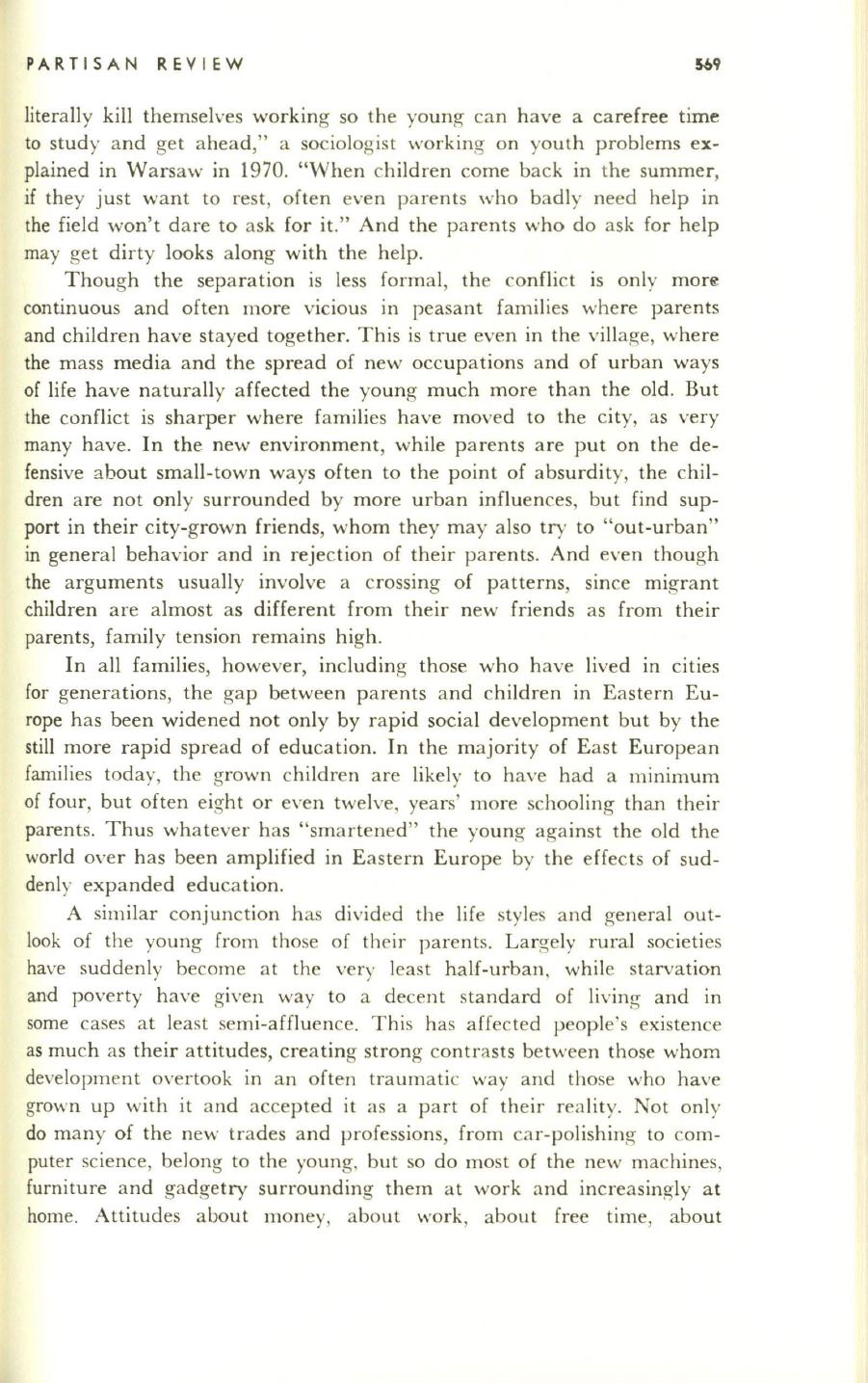
PARTISAN REVIEW
literally kill themselves working so the young can have a carefree time
to study and get ahead," a sociologist working on youth problems ex–
plained in Warsaw in 1970. "When children come back in the summer,
if they just want to rest, often even parents who badly need help in
the field won't dare to ask for it." And the parents who do ask for help
may get dirty looks along with the help.
Though the separation is less formal, the conflict is only
mor~
continuous and often more vicious in peasant families where parents
and children have stayed together. This is true even in the village, where
the mass media and the spread of new occupations and of urban ways
of life have naturally affected the young much more than the old. But
the conflict is sharper where families have moved to the city, as very
many have. In the new environment, while parents are put on the de–
fensive about small-town ways often to the point of absurdity, the chi l–
dren are not only surrounded by more urban influences, but find sup–
port in their city-grown friends, whom they may also try to "out-urban"
in general behavior and in rejection of their parents. And even though
the arguments usually involve a crossing of patterns, since migrant
children are almost as different from their new friends as from their
parents, family tension remains high.
In all families, however, including those who have lived in cItIes
for generations, the gap between parents and children in Eastern Eu–
rope has been widened not only by rapid social development but by the
still more rapid spread of education. In the majority of East European
families today, the grown children are likely to have ha,d a minimum
of four, but often eight or even twelve, years' more schooling than their
parents. Thus whatever has "smartened" the young against the old the
world oyer has been amplified in Eastern Europe by the effects of sud–
denly expanded education.
A similar conjunction has divided the life styles and general out–
look of the young from those of their parents. Largely rural societies
have suddenly become at the very least half-urban, while starvation
and poverty have given way to a decent standard of living and in
some cases at least semi-affluence. This has affected people's existence
as much as their attitudes, creating strong contrasts between those whom
development overtook in an often traumatic way and those who have
grown up with it and accepted it as a part of their reality. Not only
do many of the new trades and professions, from car-polishing to com–
puter science, belong to the young, but so do most of the new machines,
furniture and gadgetry surrounding them at work and increasingly at
home. Attitudes about money, about work, about free time, about


